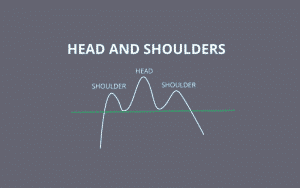During my experiences as a stock trader, I have noticed that sharp drops in a stock market attract the attention of the media unless there is other breaking news on that particular day. I see new stocks plunging and rising every day, as markets change. Keeping with the changes, I noticed that the amount of holding stocks which includes ETFs and mutual funds has dramatically risen, causing even normal investors to monitor financial market movements.
Experiencing a down market can be a nightmare for certain traders and even makes me jittery at times. However, through experience and a lot of trial and error, there are some hardcore rules that I follow in the stock market, which I will try to elucidate here.
My Ten Rules for Investing in a Down Market
First of all, do not Panic
I have a lot of stocks in my portfolio which produce terrific long term gains. However, in the course of trading, you may get to hear news about major stocks such as the Dow Jones Industrial plummeting in value. However, always remember that this is temporary in nature. You must never shun stocks that produce long-term returns just because it’s caught in a down period.
Remember that Risk and Reward go hand in hand
Remember that risk and reward go hand in hand in this market. Wealth-building investments that provide superior long-term returns also require investors to take on additional risk. This takes the form of volatility during a down market. The best way to reduce this risk is through diversification.
Remember that Major Declines are Sales
Investors, especially individuals do not show interest in buying a particular stock if it suffers a sharp decline in price. There were times when I began stock trading that I used to get swept up in pessimism when faced with such situations. However, my advice to you is to avoid this. Always view declines as financial markets having a sale on stocks.
This does not mean that I buy random stocks after a decline. Individual stocks, especially a collection of them in the same sector or industry should be avoided. You should instead buy stocks gradually over time using well managed diversified mutual funds. You can always increase your buying later when stocks are at reduced prices after suffering a significant decline.
Your Portfolio’s Perspective is the Priority
According to me, your portfolio should always consist of diversified stock holdings. This should include international stocks, domestic stocks, and a few bonds. This comes in handy during a down market as some investments will increase as others fall in value, thereby balancing the losses. Thus, when experiencing losses in a portfolio, always check if any of the holdings in your portfolio have increased in value or not. Often times, bonds and some value-oriented stocks increase in value during down markets.
Examine Problems of Your Portfolio
When I experienced a stock market decline for the first time in my trading journey, the problems of my portfolio were exposed then and there. These included having too many investments from the same industry. In addition to this, a declining stock market also exposes the high fees you may be paying for the investments. You may not care about a 2% annual fee when you are making 20 % on an annual basis. However, these fees can get quite painful and more obvious if you suffer successive years of low or negative returns.
Avoid Growth Stocks
In all my years of stock trading, I have noticed that there are certain stocks that decrease dramatically in a sustained stock market slide (bear market). These stocks are mostly the overpriced ones from the previous market rise. For instance, particular types of growth stocks such as biotechnology companies and internet companies can get extremely hot in each bull market. No one can quite predict the duration and magnitude of a bear market.
Zit thus makes more sense to focus on stocks that produce solid long-term returns and those that decline less during major market declines. I advise that you invest in value stocks which tend to be among the safest in a bear market. They generally have less downside risk as they consist of relatively greater underlying asset values in comparison to their stock valuations.
Avoiding Hyped Media
During my early years in stock trading, I used to make the mistake of subjecting myself to a daily dose of bad news and conflicting opinions about what to do next when the stock market is crumbling. This has been the reason for many of my wrong trading decisions. A continuous stream of hyped news that is negative in nature can be for your trading decisions. The economy can go through periods of expansion and decline and holding stocks always carries risk.
Consider the Percentages in Large Point Declines
You may get upset when you see an index’s points decline. However, always look at an index’s percentage rather than the points decline. Although a 200 to 300 point drops appear to be dangerous at first, such a drop only amounts to about 2% for an index trading around 12500. While it’s true that any loss is bad, the percentage of change sounds less negative than the point change.
Going Long on Defensive Stocks
You can include defensive stocks into your portfolio. These stocks are mostly shares of consumer staples and their products are needed regardless of the health of the economy. Include food and beverage producers as well as utility companies. In a well-performing economy, investments tend to flow into cyclical stocks, which are companies that non-essential items. However, when an economy experiences a downturn, investor attention shifts towards companies that produce consumer needs. Thus, when bearish sentiment occurs, investors tend to start piling into defensive stocks, just like safe havens. Use these companies as an indicator for the health of the broader stock market.
Surround yourself with People who care about you
This is advice you won’t probably see in other forums when it comes to stock trading. However, among life’s challenging events, holding an investment that’s dropped in value is definitely one of them if you are a stock trader. Don’t carry this burden by yourself and instead talk about these feelings with someone who cares about you. Be clear about what you are seeking. This can have a positive effect on your mind, which is absolutely necessary when experiencing a slump in trading.
Final Thoughts
The above points are just some of the things I did to tackle trading in a down market situation. Of course, it’s not the end-all, be-all of the trading in such conditions. There are many traders who make profits in falling markets by employing tactics such as short selling, trading safe-haven assets, and dealing short ETFs just to name a few.



